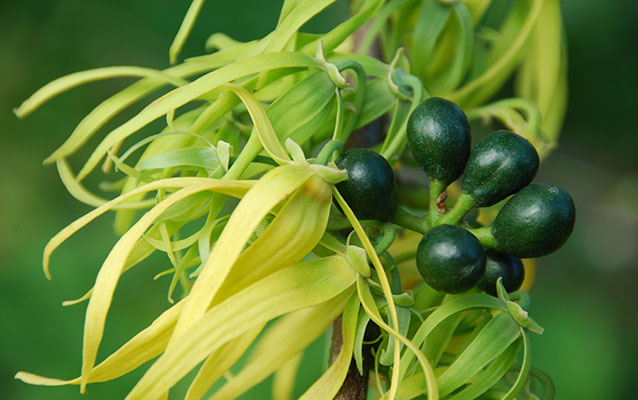Last updated: March 8, 2019
Lesson Plan
Tropical Rainforest for Medicinal Purposes

- Grade Level:
- Upper Elementary: Third Grade through Fifth Grade
- Subject:
- Science,Social Studies
- Lesson Duration:
- 60 Minutes
- State Standards:
- Standard 6: Students assess the interrelated cycles and forces that shape Earth’s surface, including human interaction with Earth.
Standard 8: Students inquire how organisms and populations of organisms obtain resources from their environment. - Thinking Skills:
- Remembering: Recalling or recognizing information ideas, and principles. Understanding: Understand the main idea of material heard, viewed, or read. Interpret or summarize the ideas in own words. Applying: Apply an abstract idea in a concrete situation to solve a problem or relate it to a prior experience.
Essential Question
What are some of the important plants and trees to Samoans and what were they used for?
Objective
Students will be able to:
1. Identify four native trees and two native plants
2. Learn about their uses.
Background
The use of medicinal plants dates to prehistoric times when ancient man found by trial and error that certain herbs and barks, when eaten, taken as an infusion, or applied externally, could alleviate some common ailments. When medicinal science began synthesizing organic and inorganic medicines in the nineteenth century, the use and reputation of herbal remedies began to decline. Synthetic medicines, such as aspirin, became so commonly accepted that little further thought was given to obtaining medicines directly form plants, and little effort was made to search for more miracle remedies.
As a result, the western world has increasingly relied upon the synthetic medicines of the pharmaceutical industry. Recently, however, this has changed. Recognizing that nature’s chemical factories, plants, make thousands of different compounds, some of which could be useful in medicines, medical scientists have dispatched botanists to places throughout the world to collect plant material for scientific testing to determine if the plants are of any value in treating cancer and various other serious modern ailments.
Samoan healers employ leaves (lau), young leaves or buds (moemoe), bark (pa’u), and roots (a’a), while fruits, flowers, and seeds are only infrequently used. When the remedy requires tree bark, the trunk is scraped with a sharp instrument, and the inner bark collected in a container. Few if any restrictions in collection of plant material are recognized. Leaves and other soft plant parts are either chopped with a knife or, more commonly, are crushed with a stone in a giant clam shell. Some leaves are simply rubbed in the hands to crush them. Most medicines are infusions prepared fresh before use, but a few are boiled and can be stored for later use. Sometimes plant material prepared for use in an infusion is wrapped in a leaf bundle and stored for a short time. Most infusions are made by placing crushed or scraped plant material into a piece of cloth and closing the cloth to form a small bag dipping the bag in water, and squeezing the juice out into a glass of water. For thousands of years, our ancestors depended on these herbs for medicine. The following are some of the most commonly found plants and trees in the National Park of American Samoa: 1) Moso’oi (cananga odorata), use (Bark infusion occasionally used as a laxative); 2) Talie(terminalia catappa), use (Bark infusion commonly used to treat coughs and mouth infections); 3) Aoa (ficus prolixa), use (Infusion of the crushed aerial roots occasionally used to treat inflammations; leaves occasionally used to treat boils); 4) Fetau(calophyllum inophyllum), use (Crushed leaves used as an eyewash and to bathe rashes and skin infections); 5) Fue Sina(mikania micrantha), use (Leaves rubbed on bee stings and very commonly on bleeding cuts) and 6) Lau Magamaga(phymatosorus scolopendria), use (Infusion of rhizome or leaves commonly used to treat diarrhea, wounds, sores, and inflammations).
Preparation
1. Picture Cards
2. Purpose Cards
3. Power point program
Procedure
What are some of the important plants and trees to Samoans and what were they used for?
Pre-Activity
Before students view the Power Point program, Ask: Have you heard the names of these plants and trees? Ask: Do you know why they are culturally important? While watching the Power Point program, explain to the students how Samoans use these plants and trees for medicinal purposes.
2. Check student comprehension by handing out another card for them to write out what they think are better plants or trees for each remedies.
Conclusion with Inquiry Question
What are some of the important plants and trees to Samoans and what were they used for?
Stewardship Message
We need to preserve and protect all native plants and trees by not cutting them down and by planting more so they will not disappear from our tropical rainforests.
